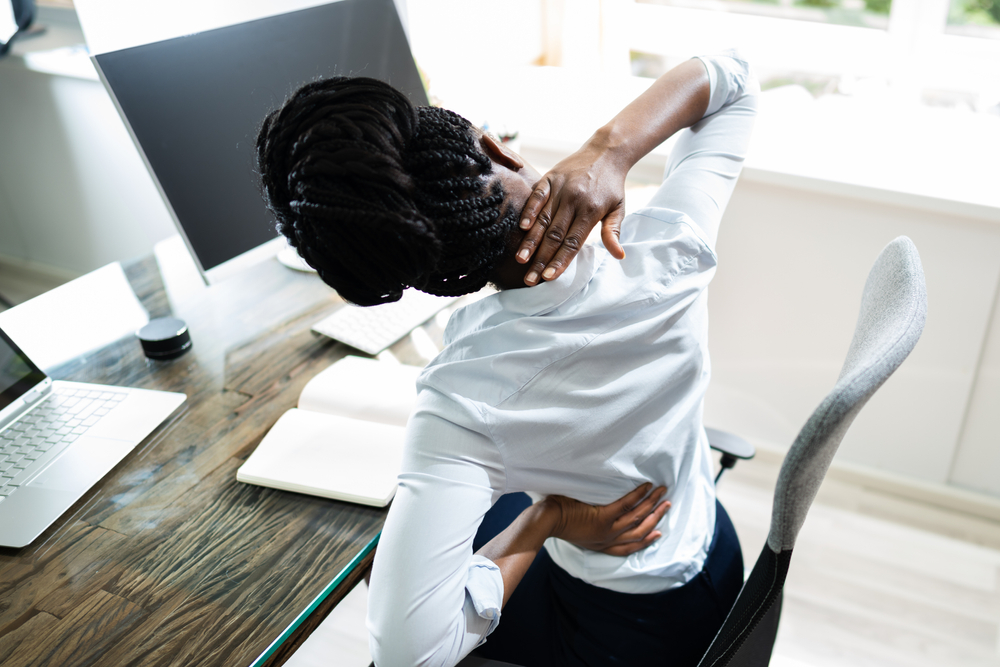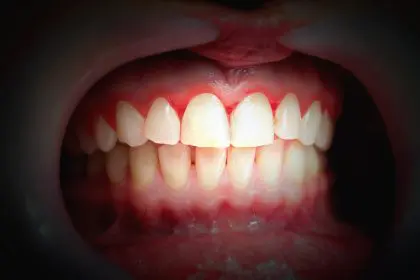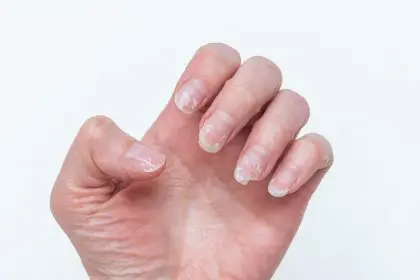These practical approaches address both immediate discomfort and help prevent future episodes
Back pain ranks among the most common physical complaints worldwide, affecting people of all ages and activity levels. Whether it stems from a specific injury, poor posture, stress, or simply the accumulated strain of daily activities, the discomfort can range from mildly distracting to completely debilitating. While severe or persistent pain warrants medical attention, many everyday back issues respond well to simple self-care strategies that can be implemented immediately at home.
The good news is that research has identified several effective approaches that don’t require prescriptions, expensive equipment, or professional intervention. These techniques address multiple aspects of back pain—from physical tension and inflammation to movement patterns and environmental factors that contribute to discomfort.
Here are six evidence-based strategies that can help ease nagging back pain quickly and effectively.
The targeted stretch sequence
When back pain strikes, the instinct to remain still is common but often counterproductive. Gentle, specific stretching can relieve muscle tension, improve circulation to affected tissues, and restore proper alignment—all factors that contribute to pain relief.
A particularly effective sequence involves three complementary stretches that address different aspects of back discomfort:
The gentle spinal twist: Begin by sitting on the floor with legs extended. Bend your right knee and place your right foot on the outside of your left knee. Place your left elbow on the outside of your right knee and gently twist your torso to the right, keeping your spine tall. Hold for 20-30 seconds, breathing deeply, then repeat on the opposite side. This rotation helps mobilize the spine and relieve pressure between vertebrae.
The supported bridge: Lie on your back with knees bent and feet flat on the floor, hip-width apart. Slowly lift your hips toward the ceiling, creating a straight line from shoulders to knees. Hold for 10-15 seconds while breathing normally, then lower with control. Repeat 5-8 times. This movement activates the core and gluteal muscles while gently extending the spine, providing relief particularly for lower back tension.
The child’s pose stretch: Kneel on all fours, then sit back on your heels while extending your arms forward on the floor and lowering your forehead to the ground. Hold this position for 30-60 seconds, breathing deeply into your back. This stretch creates gentle traction on the spine while opening the lower back.
Perform this sequence once or twice daily when experiencing back pain. The entire routine requires less than 10 minutes but can provide hours of relief by addressing muscular tension and spinal compression.
For best results, move slowly and mindfully during each stretch, avoiding any movements that increase pain. The goal is gentle release rather than intense stretching—pushing too far can counteract the benefits and potentially worsen discomfort.
The posture reset technique
Many back pain episodes stem from or are exacerbated by poor postural habits, particularly during prolonged sitting. Research shows that implementing brief posture “resets” throughout the day can significantly reduce pain and prevent its recurrence.
The wall alignment check serves as both assessment and correction:
Stand with your back against a wall with heels about 2-3 inches from the baseboard.
Ensure that your head, shoulder blades, and buttocks touch the wall, while maintaining the natural curve in your lower back.
Notice which areas feel distant from the wall or uncomfortably pressed against it—these highlight your specific postural deviations.
Hold this aligned position for 10-15 seconds, mentally scanning your body from head to toe.
Step away from the wall and attempt to maintain this alignment as you return to normal activities.
For desk workers, implementing the “30-30-30 rule” has shown remarkable effectiveness:
Every 30 minutes, spend 30 seconds performing 3 shoulder rolls backward, then spend another 30 seconds in the wall alignment position or simply standing with proper posture.
This brief intervention helps reset the muscular patterns that contribute to pain. Throughout the day, imagine a string pulling upward from the crown of your head, lengthening your spine and automatically improving alignment.
For sleeping posture, placing a pillow between the knees when side-lying or under the knees when on your back can significantly reduce strain on the lower back. This simple adjustment maintains proper spinal alignment during rest, preventing the morning stiffness that often accompanies back pain.
The targeted release approach
For acute back discomfort, self-massage techniques can provide immediate relief by releasing trigger points—those hypersensitive spots in muscles that refer pain to broader areas. This approach is particularly effective for muscle-related back pain rather than structural issues.
Tennis ball technique:
Place a tennis ball between your back and a wall, positioning it near (but not directly on) your spine where tension is greatest.
Gently lean into the ball and make small, slow movements to apply pressure to tight areas.
When you find a particularly tender spot, remain still for 30-60 seconds while taking deep breaths.
Continue moving the ball to different areas of tension, spending 3-5 minutes total on this release work.
For lower back pain, a similar technique can be performed lying on the floor with the tennis ball positioned under tight muscles. The floor provides firmer pressure than the wall version, so begin gently to avoid excessive discomfort.
Foam rolling the adjacent muscle groups often proves surprisingly effective for back pain relief:
Focus on rolling the glutes, hip flexors, and mid-back (thoracic spine) rather than the sensitive lower back directly.
Spend 30-60 seconds on each muscle group, moving slowly and pausing on tender areas.
This peripheral approach helps release tension in muscles that pull on the spine, often providing more effective relief than directly addressing the painful area.
These self-release techniques work by improving blood flow to tense tissues, releasing trigger points that refer pain throughout the back, and stimulating sensory receptors that can temporarily override pain signals. For best results, practice these techniques daily when experiencing pain, ideally followed by gentle stretching to maintain the released state.
The movement medicine protocol
While rest might seem logical when back pain strikes, research consistently shows that appropriate movement often provides faster relief and better long-term outcomes than inactivity. The key lies in choosing the right types of movement that promote healing without exacerbating symptoms.
Walking therapy has emerged as one of the most effective interventions for most types of back pain:
Start with just 5-10 minutes of gentle walking on flat terrain.
Focus on smooth, rhythmic movement with arms swinging naturally.
Gradually increase duration as comfort allows, aiming for 20-30 minutes daily.
Walking stimulates circulation throughout the spine, pumps nutrients into compressed discs, and releases endorphins that naturally reduce pain perception. The rhythmic, bilateral movement also helps reset muscular patterns and reduce compensatory tension that develops around painful areas.
For those who find walking uncomfortable, aquatic movement offers an excellent alternative:
Walking or gentle exercises in waist-deep water provides the benefits of movement with reduced compression on the spine.
The water’s resistance strengthens supporting muscles while its buoyancy decreases pressure on sensitive structures.
Even 10-15 minutes of water movement can significantly reduce pain levels.
For immediate relief during acute episodes, the “pain-free movement scan” technique helps identify directions of movement that temporarily reduce symptoms:
While standing or sitting, gently bend forward, backward, and to each side, noticing which directions decrease your pain.
Once identified, perform very small, gentle movements in the pain-relieving direction, repeating 8-10 times.
Return to this movement several times throughout the day, particularly when discomfort increases.
This approach, based on principles from various movement therapies, utilizes the body’s natural corrective mechanisms to temporarily reduce pain and restore normal function. The key is finding movements that decrease rather than provoke symptoms, which requires attentive experimentation unique to each person’s condition.
The environmental modification strategy
Sometimes the quickest route to back pain relief lies not in what we do to our bodies but in changing the environments that strain them. Simple adjustments to everyday setups can dramatically reduce back stress and prevent recurrent discomfort.
For workspace ergonomics:
Position your monitor at eye level to prevent forward head posture that strains the entire spine.
Choose a chair that supports your lower back’s natural curve, or add a small cushion or rolled towel behind your lumbar region.
Ensure feet rest flat on the floor or on a footrest, with knees at approximately hip level.
Position frequently used items within easy reach to avoid repeated twisting and reaching.
For sleep environment modifications:
Evaluate your mattress—research suggests medium-firm mattresses generally provide the best support for back pain sufferers.
If replacement isn’t feasible, consider a mattress topper designed for back support.
Arrange pillows to maintain spinal alignment during sleep—side sleepers should have sufficient pillow height to keep the spine straight from head to tailbone.
For daily activities:
Use a supportive bag that distributes weight evenly, such as a backpack worn on both shoulders rather than a single-shoulder bag.
When lifting objects, even lightweight ones, bend at the knees rather than the waist and hold items close to your body.
Consider using a hands-free phone headset to avoid cradling the phone between ear and shoulder, which creates significant neck and upper back strain.
Wear supportive footwear, as foot mechanics directly impact spinal alignment and back comfort.
These environmental modifications work by reducing the cumulative stress that builds throughout the day. Often, back pain doesn’t result from a single movement but from repeated small stresses that accumulate until symptoms appear. By changing these environmental factors, you address the underlying causes rather than just treating symptoms.
The mind-body relaxation technique
The connection between stress, muscle tension, and back pain is well-established in research. Mental stress leads to physical tension, particularly in the back, neck, and shoulders. This tension restricts blood flow, alters movement patterns, and can directly generate or amplify pain signals.
A particularly effective technique for breaking this cycle combines progressive muscle relaxation with mindful breathing:
Find a comfortable position lying down or reclined in a supportive chair.
Begin by taking three slow, deep breaths, extending the exhale longer than the inhale.
Starting with your feet and moving upward, systematically tense each muscle group for 5 seconds, then release completely for 15 seconds, noticing the sensation of relaxation.
Pay particular attention to the back muscles—during their turn, gently arch to create tension, then release fully into the supporting surface.
After completing the body scan, spend 2-3 minutes breathing naturally while imagining each inhale bringing oxygen to any remaining tense areas in your back, and each exhale releasing the tension.
This practice effectively reduces the muscular bracing that often accompanies and perpetuates back pain. Research shows that just 10 minutes of this technique can significantly lower muscle tension and related discomfort.
For ongoing prevention, shorter versions can be implemented throughout the day:
Mini-relaxation: Take three deep breaths while consciously relaxing your shoulders, jaw, and back muscles. Even this 30-second intervention can interrupt the tension cycle when practiced regularly.
Body scan breaks: Once hourly, take 60 seconds to mentally scan your body for areas of tension, particularly in the back, and consciously release them.
These mind-body techniques work by interrupting the stress-tension-pain cycle at its source. They also help restore normal breathing patterns that often become disrupted during pain episodes, further reducing physical strain on the back.
Implementing these strategies effectively
The greatest benefit comes from combining these approaches rather than relying solely on one technique. Consider creating a simple back care routine that incorporates elements from each strategy:
Morning: Perform the stretch sequence and posture reset to start the day with proper alignment.
Throughout workday: Implement the 30-30-30 posture rule, take brief walking breaks, and practice mini-relaxation techniques hourly.
Evening: Use the self-massage techniques followed by the mind-body relaxation practice.
Consistency proves more important than duration—brief but regular attention to these strategies typically yields better results than longer but sporadic efforts. Even implementing just one or two techniques can provide noticeable relief when practiced consistently.
While these approaches help manage and often resolve many common back pain episodes, persistent or severe pain warrants professional evaluation. Consider these strategies complementary to rather than replacements for appropriate medical care when needed.
The encouraging news is that research consistently shows most back pain responds well to these simple self-care approaches. By incorporating these techniques into your routine, you not only address current discomfort but build resilience against future episodes—empowering yourself with effective tools for both immediate relief and long-term back health.















